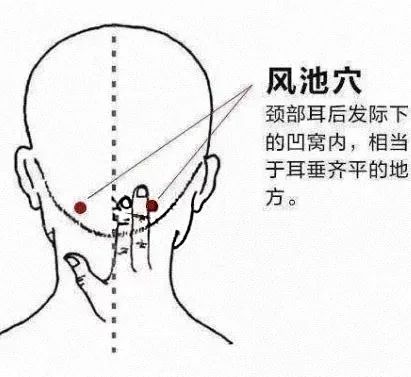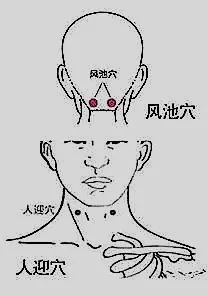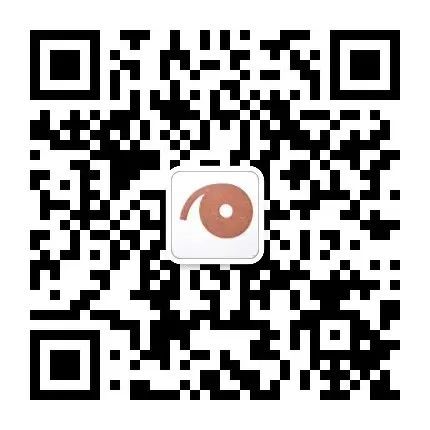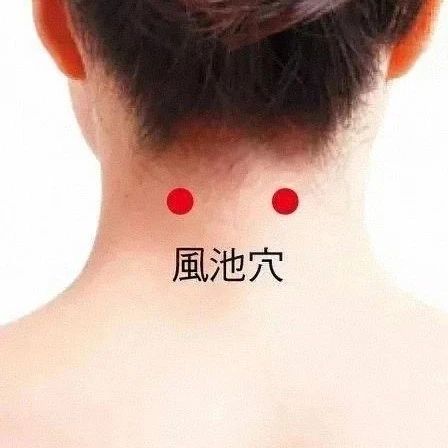Fengchi Point /

1
Fengchi – Awakens the Mind and Opens the Senses, Enhances Hearing and Vision
The Fengchi point, also known as Refu point, is located at the nape of the neck, just below the occipital bone, aligned with the Fengfu point, in the depression between the sternocleidomastoid muscle and the upper trapezius muscle.
“Feng” refers to the wind energy of the material within the point, while “chi” indicates a vessel that holds water and moisture. The name Fengchi suggests that the qi and blood here transform into a warm, yang energy. The material at this point is the moisture energy transmitted from the brain cavity, which, upon receiving external heat, expands and transforms into warm, yang energy that disperses throughout the head and neck, hence the name Fengchi.
2
Functions of Fengchi Point
The Fengchi point has the effects of clearing heat and releasing the exterior, awakening the mind and opening the senses, enhancing hearing and vision, and promoting the flow of qi and blood.
Clinically, moxibustion at Fengchi is often used to treat conditions such as febrile diseases without sweating, headaches, dizziness, nosebleeds, red and swollen eyes, tearing in the wind, tinnitus, deafness, insomnia, forgetfulness, stroke paralysis, stiff neck, shoulder and back pain, hypertension, concussions, wind rash, urticaria, pruritus, acute conjunctivitis, photokeratitis, retinal artery occlusion, glaucoma, endocrine exophthalmos, myopia, facial muscle spasms, neurodermatitis, scabies, acne, and hair loss.
3
Moxibustion at Fengchi Point
For moxibustion at this point, due to hair covering Fengchi, it is best to use moxa sticks. After igniting the moxa stick, hold it above the acupoint, slightly raising it while using the other hand to part the hair, keeping the moxa stick 2-3 cm away from the skin for the treatment. Each session should last 5-10 minutes.
4
Massage of Fengchi Point
In addition to moxibustion, different massage techniques can be applied to Fengchi based on various symptoms to achieve health benefits. For instance, consistently massaging both sides of the Fengchi point daily can effectively prevent and treat colds. When there are no cold symptoms, the pressure on the Fengchi point should not cause significant discomfort. If there is noticeable discomfort, it indicates a high susceptibility to colds, and one should massage more frequently and with greater intensity. When cold symptoms such as sneezing and runny nose appear, massage can also help alleviate the condition.
Additionally, if children studying at home frequently experience headaches, parents can encourage them to take breaks while studying. During the break, while chatting with the child, parents can place their hands with fingers spread naturally against the back of the child’s head, applying pressure with the thumbs on both sides of the Fengchi point, using moderate force until the child feels slight discomfort. This should be done for about 15 minutes. This not only deepens the parent-child bond and helps the child relax but also stimulates blood supply to the neck, ensuring adequate blood and oxygen supply to the brain, thus enhancing its function.
5
Other Functions of Fengchi Point
It is known that the Fengchi point also has the functions of clearing heat and reducing fire, promoting the flow of qi and blood, and unblocking meridians, with rapid and effective pain relief. Many patients with hypertension have experienced that when the head, neck, and face feel tense, blood pressure readings tend to be higher.
Modern acupuncture research has found that needling the Fengchi point can dilate the vertebrobasilar artery, increasing cerebral blood flow and improving blood oxygen supply to damaged brain tissue, enhancing vascular elasticity and reducing blood resistance. Therefore, regular stimulation of the Fengchi point can help prevent hypertension. What if blood pressure is already high? Combining it with scraping the Renying point can help lower blood pressure.
Press
Fengchi Point and Renying Point /


Official Account: Natural Recovery of Vision

